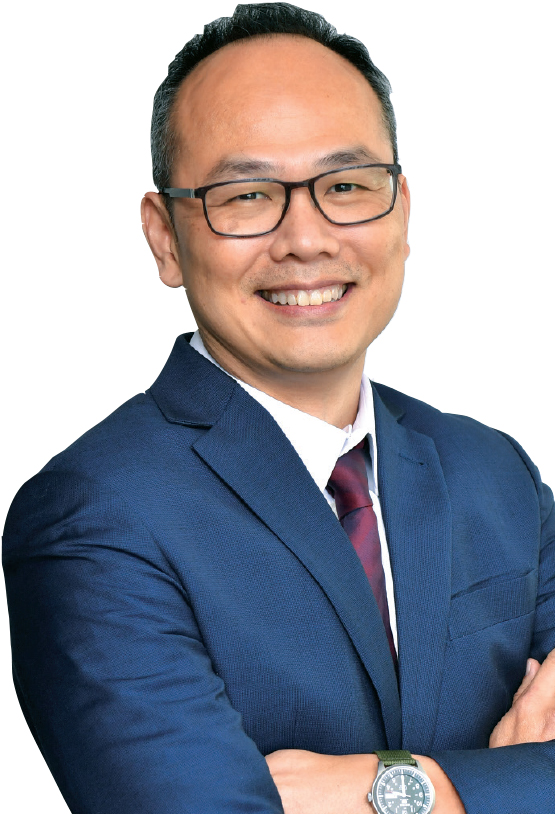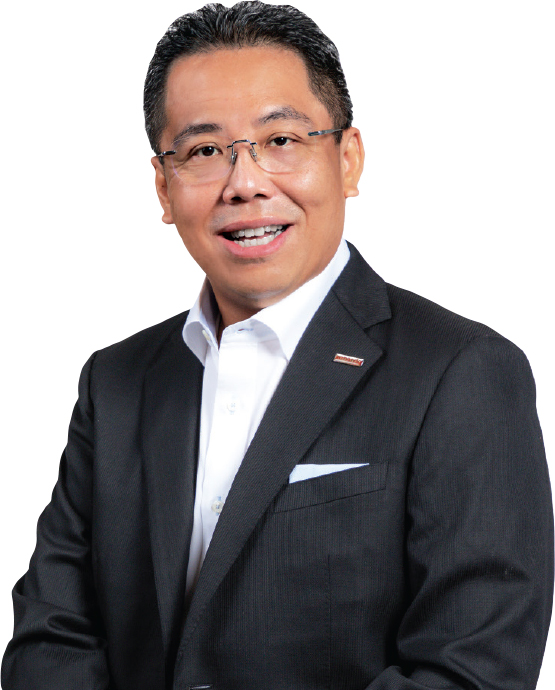Straddling the Line Between Conviction + Flexibility
edgeinvest
Publish date: Tue, 28 Mar 2023, 09:00 AM

This article first appeared in Wealth, The Edge Malaysia Weekly on March 27, 2023 - April 2, 2023
One doesn’t need to look far to identify 2022 as an extremely challenging year for fund managers. While the winners of the Refinitiv Lipper Fund Awards 2023 generated attractive returns over the long term, most funds suffered losses last year. Only an exceptional few eked out single-digit returns.
When the overall prices of stocks and bonds fell, fund managers had nowhere to hide. They had to raise cash or rotate their holdings into value stocks and defensive sectors from growth-oriented ones. Some were forced to concentrate their portfolios on a few defensive names, which goes against the core investing principle of diversification.
In email responses to Wealth, fund managers opine that 2022 was a very tricky year to navigate. It tested their conviction in companies they thought would do well, while requiring them to be flexible in changing their views to minimise losses.
The good news is that the worst could be over. This is expected to be a better year for the Asian markets, including Malaysia, on the back of the reopening of China’s borders and business activities. The China reopening theme is what most fund managers are betting on at the moment.
UOB Asset Management Bhd CEO Lim Suet Ling and Pheim Asset Management Sdn Bhd founder and chief strategist Dr Tan Chong Koay opine that 2022 was one of the very few years when stock and bond prices fell in tandem.
Just how rare was it? “Based on US data since 1928, this was only the fourth occasion where equity and fixed income declined in the same calendar year. It was due to high inflation and tightening monetary policy,” says Lim.
“The years when both stocks and bonds fell in tandem were few and far between, which is one reason why last year’s brutal losses marked the biggest outlier year in [fund management] history,” says Tan.
Unit trusts of various asset classes fell into the red last year. The few award-winning funds that successfully churned out positive returns were: RHB Bond (9.4%), PMB Shariah Equity (8.63%), Public ASEAN Growth (4.05%), AmanahRaya Unit Trust (3.25%), AmanahRaya Shariah Trust (2.54%), KAF Jade (0.14%) and Maybank Malaysia Income (0.05%).
As most local fund managers are long-only investors that generate returns from the appreciation of asset prices, they were left with little choice but to mitigate their losses. A straightforward way of doing so is raising cash.
AHAM Capital deputy managing director and chief investment officer David Ng says at one point, the firm held the maximum amount of cash as allowed by the mandate of each fund. It was only until the fourth quarter that it started deploying that money again.
“Long-only investors had few options in such challenging conditions. One option was to be more defensive by reducing market exposure by holding higher cash levels.
“The second option was in sector selection, which means putting money in sectors like energy and materials and financials that outperformed in last year’s market. The former did well due to supply and demand dynamics and the latter benefited from the interest rate hike cycle.”
Raising cash from a beaten market seems natural to do, but switching a large part of one’s portfolio allocation to the energy and commodity sector might not be.
Just a year ago, the traditional energy and specific commodity sectors, such as oil and gas and oil palm plantation, were deemed unattractive due environmental, social and governance (ESG) concerns.
The two sectors are plagued by various pollution and labour issues, yet both did extremely well last year as market demand outstripped supply. On the other hand, technology stocks that were the darling of investors in 2021 experienced a change in fortune, with their prices and valuations slumping.
It was under such a background that fund managers had to overcome their initial perceptions and psychological barriers towards the energy and commodity sectors to put money in them for potential gains or to shield themselves from losses.
KAF Investment Funds Bhd CEO Chue Kwok Yan says the concentration of the firm’s portfolio on specific sectors and stocks made him and his team uneasy at times. “The circumstances required us to be more concentrated on some sectors and stocks, which went against the theory of diversification, in our opinion. Last year was a more challenging year than 2021 and 2020.”
Don’t hate or love a sector too much
PMB Investment Bhd CEO Mahani Ibrahim illustrates how quickly markets’ and investors’ views and sentiments changed in the past two years.
“Sectors that outperformed in 2021 turned laggards in 2022. For instance, the technology and industrial sectors were up 38.57% and 13.81% respectively in 2021. They became underperformers in 2022 as both went down 34.29% and 10.33% respectively.
“Meanwhile, the energy and plantation sectors, which fell 21.14% and 10.28% respectively in 2021, recorded positive growth in 2022. Both sectors rose 10.27% and 8.13% respectively,” she says.
The FBM KLCI was also in another year of roller-coaster rides, she adds. It fell 72.04 points (or -4.6%) to close at 1,495.49 points at the end of the year. The index posted its highest level of 1,618 points on March 3 and lowest level of 1,373 points on Oct 13. It moved as much as 245 points last year, compared with 158 points in 2021.
“Generally, last year’s market was very volatile and uncertain,” Mahani says.
Such a backdrop made the market a testing ground for the fund managers’ ability to strike a balance between conviction and flexibility. It was hard to tell sometimes whether one should continue to avoid specific sectors or let go of a stock. But that was a key lesson that fund managers had to learn last year.
In her response to Wealth, Mahani shares that PMB Investment had shied away from the oil palm plantation sector, which caused one of its funds to underperform the benchmark when the price of crude palm oil (CPO) shot up to RM8,000.
“We have not been looking at the plantation sector due to ESG concerns, in particular, labour issues. We were severely underweight when CPO prices rallied.
“A key lesson we learnt is don’t hate a sector too much. We have to always stay alert and be able to determine the opportunity in the ever-changing environment to generate alpha,” she says.
AHAM’s Ng has a similar view. “We shouldn’t ignore cyclical sectors like energy and commodities when the conditions are ripe.
“In general, we have a growth bias by investing in companies that exhibit longer-term growth potential. Historically, these companies have been shown to outperform over the long term by delivering steady compounded returns.
“However, last year, we saw the tables being turned and the cyclical sectors hogged the market spotlight. Global energy stock rose 41.1% while global equity markets fell 19.5%,” he says.
Just as one should not hate a sector too much, one should not love a sector too much either. Investors should be disciplined in taking profits when the price and valuation of a company or sector run ahead of their intrinsic value.
Jason Chong, CEO of Manulife Investment Management (M) Bhd — which won three group awards at the Refinitiv Lipper Fund Awards 2023 — says the firm would have done better if it had sold more shares of some technology counters earlier. “If we had been more aggressive in taking profits on the technology sector in 2021, following the run-up [in the companies’ prices and valuations], our fund would have performed much better in 2022.
“While the technology sector will continue to exhibit structural growth due to trending factors such as artificial intelligence (AI), cloud computing, industrial automation and more, it is timely to lock in gains once the multi-year growth story has been priced in,” he says.
Pheim’s Tan also emphasises the importance of taking profits. “The timing of selling a stock is just as important, if not more important, than the timing of buying a stock.
“When one feels valuations have run ahead of fundamentals in a short period of time, it is prudent to realise the gains and re-enter only when the share prices retrace sufficiently, and that the stock’s future remains intact.”
All eyes on China’s reopening, growth stocks might make a comeback
Moving forward, the consensus among most fund managers is that the US is likely to enter a recession moving forward. The failure of the Silvergate Bank, Silicon Valley Bank and, most recently, the Signature Bank, could be its precursor.
However, Asia is expected to be spared from negative economic growth on the back of the reopening of China’s economy. In fact, most fund houses are placing their bets on investment themes surrounding that occurrence.
According to Kenanga Investors Bhd CEO Datuk Wira Ismitz Matthew De Alwis, China’s GDP is expected to rebound to 7% in the second quarter of this year (2Q2023) from 2.8% in 1Q2023. It is also expected to grow by 5.2% for the year from 3% last year.
Countries in Southeast Asia would benefit from China’s rebound, he adds. “In Asean, we are positive on Thailand as a key beneficiary. Indonesia would also continue to benefit structurally from consumption and foreign direct investment.”
Tan is increasing Pheim’s equity exposure due to the reopening of the Chinese economy. “We see pockets of opportunities emerging in certain sectors and countries, pursuant to automation, digitalisation, 5G connectivity, autonomous vehicles, AI, EV battery technology and renewable energy.
“Trade and supply chain diversification from China to Asean would also benefit certain companies,” he says.
AHAM’s Ng favours the consumer and semiconductor sectors on the back of China’s reopening. “Consumer stocks are expected to benefit from a recovery in consumption, especially in China, as it fully pivots away from its strict Covid-19 lockdowns.
“The semiconductor sector has been going through a period of de-stocking in the last few months, and could see a cyclical upturn towards the latter part of the year. Furthermore, a new race in the AI arena has started and the consumption of [semiconductor] chips is poised to move up a notch,” he says.
Many fund managers turned defensive last year by switching out their position from growth stocks to value stocks. But this could change.
“The growth versus value trade may swing back in favour of growth as interest rates peak out. We like growth names expressed through technology [counters],” says Ng.
Such a view is in line with that of Areca Capital Sdn Bhd. Its CEO Danny Wong says the firm has been deploying funds into some growth sectors, such as the technology sector, recently.
“We’ve been taking profits off the banks and deploying it into the bombed-out tech sector. But we have to be selective in picking companies that are exposed to the right secular trends, such as electric vehicles,” he says.
Principal Asset Management Singapore CEO and chief investment officer Christopher Liew expects Asia to produce positive earnings growth this year.
He also favours European equities over those of the US and Japan. “US valuations are still expensive. Japan’s and Europe’s valuations went higher, but are still favourable.
“We maintain our overweight position on Europe due to its resilient economic growth and falling inflation. Sentiments have also improved as the region may avoid a deep recession. It is also supported by positive forward earnings revision.
“We maintain a neutral allocation to Japan. With US inflation likely to peak, so are Federal Reserve’s rates. The Japanese yen could stop depreciating and, therefore, we have exited the currency-hedged Japan ETF,” he says.
Malaysia likely to avoid a recession, higher-yielding bonds may shine
On the local front, most fund managers do not expect Malaysia to plunge into a recession this year. AmanahRaya Investment Management (ARIM) managing director and CEO Mohamad Shafik Badaruddin says a slowdown in the local economy is more plausible. “The probability of a recession in Malaysia is low for 2023. But we are still wary of some lingering issues such as stubbornly high inflation numbers in the US, labour shortages and geopolitical tensions.”
It is clearer now that inflation and interest rate hikes are dissipating, which is good for fixed incomes, including local bonds, he adds. “For fixed income, slowing rate hikes would be a boon to the market as fund managers are able to limit the negative price impact on their funds.”
In fact, ARIM is looking to increase its bond portfolio duration moving forward, most likely in the second half of the year, as it expects fewer rate hikes ahead. “We would also remain fully invested and likely maintain our cash level at between 5% and 10%,” says Shafik.
Goh Wee Peng, CEO of AmFunds Management Bhd (AmInvest), says the risk of recession is likely to be low, especially in Asia and Malaysia.
The firm, which is well known for its local bond funds, is generally light on cash for its bond funds. Goh expects the bond market to see a sustainable recovery before the equities market.
“We are expecting market liquidity to improve this year, hence more trading opportunities are anticipated. We shall frequently rebalance our funds into higher-yielding bonds when there is adequate supply,” she says.
Public Mutual Bhd, the firm that won the most individual awards, expects a slower economic growth this year and is setting its eyes on higher-yielding bonds, says CEO Chiang Kang Pey.
“Given the prospects of slower global economic growth, moderating inflation and a peaking of global interest rates, the bond portfolios of our balanced and mixed asset funds will continue to capitalise on selected high-yielding bonds that are attractively priced to generate potentially better returns,” he says.
Kenanga and RHB more open to digital assets
Based on email responses from fund houses, only Kenanga Investors Bhd has plans to offer its clients cryptocurrency-related products.
CEO Datuk Wira Ismitz Matthew De Alwis says digital assets, or cryptocurrencies, are here to stay despite the recent crypto winter. Not only has the price of bitcoin rebounded nearly 48% from the start of the year to late February, global demand for digital assets has also continued to grow.
“We see growing demand in this new asset class globally, especially among institutional investors. It is becoming mainstream.
“Kenanga Investors is exploring several crypto-related product ideas for clients who wish to gain exposure, or to leverage the upward trend of this new asset class,” he says.
RHB Asset Management Sdn Bhd (RHBAM) is another fund house that seems to have a more open mind towards digital assets. Its chief investment officer Michael Chang has witnessed the global growth of cryptocurrencies, blockchain technology, non-fungible tokens and other digital assets.
He says these assets have certainly evolved and expanded into new areas that involve new players and technologies.
“However, at RHBAM, we are evaluating digital assets and we believe that at this juncture, more studies have to be done before making any move, given the extreme volatility of this new asset class.”
The remaining 15 award-winning fund houses are not keen to explore digital assets. The reason being they do not have intrinsic values, or those firms do not have the expertise to invest in cryptocurrencies.
The lack of regulations surrounding digital assets and their exposure to money laundering activities are two other reasons.
However, Manulife Investment Management (M) Bhd CEO Jason Chong points out that Malaysian contract manufacturers that are involved in the bitcoin mining machines space do look interesting.
Save by subscribing to us for your print and/or digital copy.
P/S: The Edge is also available on Apple's AppStore and Androids' Google Play.
Source: TheEdge - 28 Mar 2023
More articles on CEO Morning Brief
Created by edgeinvest | Nov 29, 2024
Created by edgeinvest | Nov 29, 2024
Created by edgeinvest | Nov 29, 2024
Created by edgeinvest | Nov 29, 2024
Created by edgeinvest | Nov 29, 2024
Created by edgeinvest | Nov 29, 2024



























